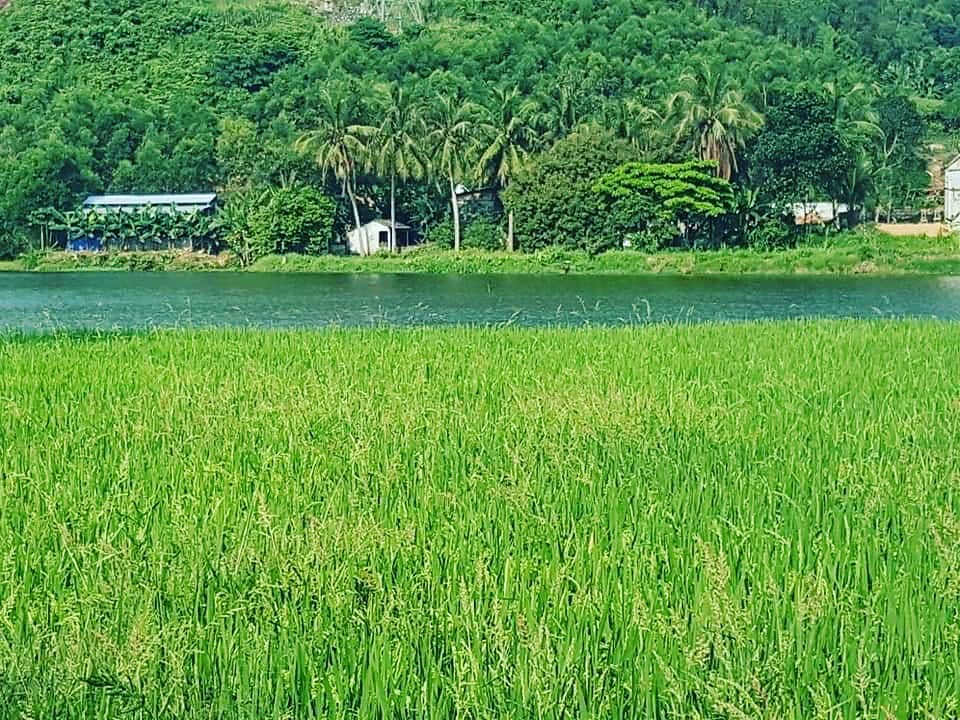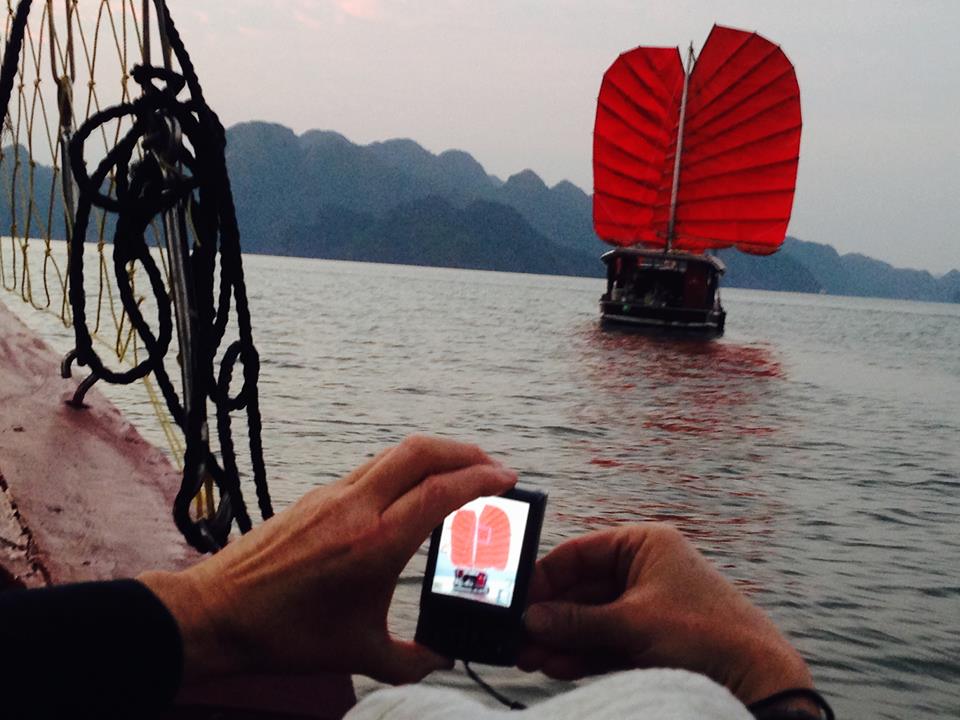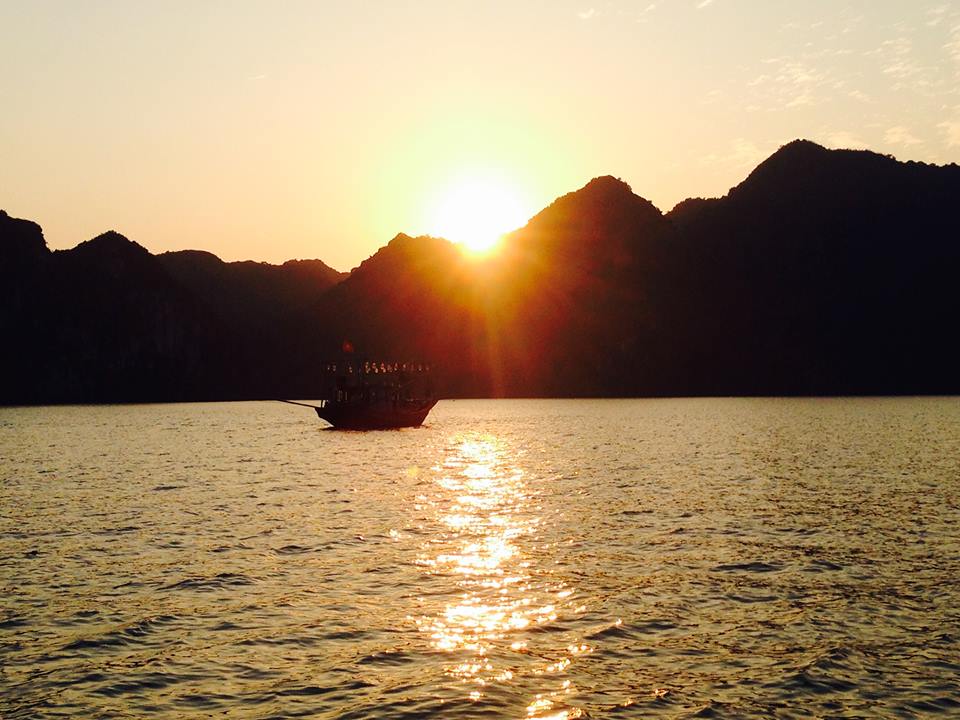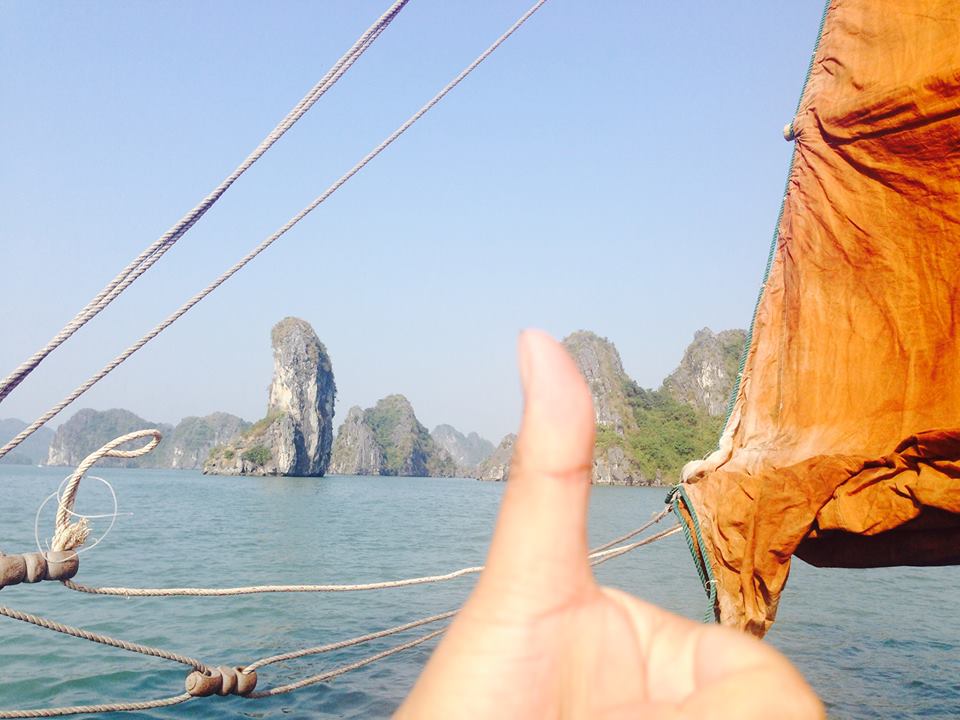Blog de Voyage
Dong Du Village
Rice Fields, Waterwheels and Eco - Homestays in Green Pu Luong
Updated: 28/1/2019 | 7:11:12 PM
Tourists usually do their best to try and avoid the rainy season—but in Vietnam at least, the occasional downpour (usually short-lived and confined to the late afternoon) is worth enduring for the fresh air, verdant landscapes and new life that the rains bring. To celebrate the end of winter and the beginning of green season in Northern Vietnam, we spent a long weekend in Pu Luong Nature Reserve, one of the country’s lesser-known ecotourism and trekking spots.
Remote, rustic and supremely beautiful, I think Pu Luong and Pu Mat might be one of the last places in Vietnam where you can truly unplug. Where we stayed in Ban Hieu village, we couldn’t even get WIFI or 4G.
Pu Luong (Pù Luông) is located on the cusp of Hoa Binh and Thanh Hoa provinces, about 160km southwest of Hanoi. It’s a popular weekend getaway for locals, but sees relatively few foreign visitors. This makes a nice change from the nearby and wildly popular Mai Chau, which is overrun with tourists at this time of year.
Pu Luong Nature Reserve (Khu bảo tồn Thiên nhiên Pù Luông) was established in 1999 to protect the area’s biodiversity. Inside the reserve, you’ll find a mix of pristine forest and cultivated rice terraces. It’s a perfect landscape for trekking, and multi-day hikes are a favourite activity.
A narrow highway bisects the reserve along the valley floor, connecting a series of small villages and hamlets. The southeastern corner of the reserve has a few clusters of homestays, making it a good place to base your visit.
Pu Luong’s incredible waterwheels
Part of Pu Luong’s charm is the bamboo waterwheels that dot the landscape. The rice grown in these parts needs to be submerged to thrive (unlike mountain rice, which can be grown in dry paddies)—which requires a large volume of water. Built by people from the Thai and Muong ethnic groups, the wheels harvest water from low-lying streams to feed the vast rice crops. They especially come in handy during the dry season and periods of drought when the water level is low. You can find the waterwheels sitting all along the rocky streams that run through Pu Luong.
When you see them up close, you realise how starkly simple but effective the waterwheels are. The wheel spins slowly of its own accord, propelled by the running stream. Lengths of bamboo pipe scoop up small amounts of water and once at the top, dispense it into a bamboo tube.
The water then flows along an elevated bamboo pipeline. This one was particularly complex, running for several metres through neighbouring fields. Once it’s reached its destination, the water trickles out from the bamboo and tops up the paddies. If the rice field is terraced, any overflow spills over the mud dykes into the field next door.
I assume there’s a way to turn the wheels on and off by stopping them from spinning. Otherwise, they can just be left to run, delivering fresh water around the clock without the need for electric pumps or anyone to carry the water by hand.
The end result! Rice paddies full to the brim with fresh water. When we visited Pu Luong, farmers were still in the first stage of rice production—transplanting their neon-green seedlings.
Where to stay in Pu Luong Nature Reserve
Ban Hieu (Bản Hiêu) is a small village in Co Lung district in the southeastern corner of the reserve. Shaded by dramatic mountain peaks and surrounded by rice terraces, it’s an idyllic little hamlet of thatched houses. There is a collection of at least five homestays in Ban Hieu, each one a little further up the mountainside than the last. The village is only accessible by foot or motorbike.
We stayed at Ban Hieu, one of the first homestays you come to after leaving the main road. They offer dorm-style rooms in a traditional stilted house plus two bungalows. The host family doesn’t speak much English, but they are very kind and accommodating. The bungalows are beautifully furnished and very comfortable, with private bathrooms and hot water showers. Meals—plentiful and made with fresh vegetables from the garden—are available at an extra cost.
There is another collection of homestays in the Lang Bang area, west of Ban Hieu and closer to the highway. The popular Pu Luong Retreat is also located here. We passed this area on our way out of the park, and from the looks of it, the landscape is more mountainous. Personally, I would recommend Ban Hieu because it’s quieter and the area looked more suitable for easy trekking.
Trekking in Pu Luong Nature Reserve
Most tourists come to Pu Luong to trek. Guided multi-day hikes through the park are popular—we saw a few trekkers passing through Ban Hieu and overnighting at the homestays there. If, like us, you are coming to relax, small walks in and around Ban Hieu village will more than suffice. You don’t have to go very up the mountain behind the village before the dramatic rice terraces reveal themselves. Around the valley floor, you’ll find pretty hamlets, shallow waterfalls, and plenty of those famous waterwheels to admire.
When is the best time to visit Pu Luong?
We always recommend people come to Vietnam during green season. The weather is pleasant, there are far fewer tourists around, and best of all, the landscape is lush and green. We visited Pu Luong in early March and had perfect conditions (cool nights, sunshine, and neon-green rice paddies). The second-best time to visit would be harvest season, when the rice fields turn to shades of yellow and gold.
How to get to Pu Luong Nature Reserve
Pu Luong is peaceful because it’s also remote. Transport options for getting both in and out, and around the reserve are thus pretty limited. They might exist, but we didn’t see any local buses at all. From my experience, I’d say having your own transportation is pretty much essential. We travelled in and out of Ban Hieu by private car, but you could also get around on motorbike. Homestays can help with organising private transfers (just ask at the time of booking).
From Hanoi, the drive to Pu Luong takes around 4.5 hours on very windy roads. It’s best to break the journey in either Ninh Binh or Mai Chau. We drove into the reserve from Ninh Binh and out the other (northern) end. Both stretches of road were scenic and offered interesting stopovers—mainly fields and waterwheels on the way in, and shimming rice terraces on the way out. If you’re planning to visit Pu Luong and need help with logistics, Ethnic Voyage is the best agency to talk to. They can help with transport, accommodation, and also organise multi-day treks.
Getting to Pu Luong takes a bit of extra effort (and money), but it’s well worth it for the breathtaking landscapes, lovely homestays and solitude. Pu Luong Nature Reserve is without a doubt one of my favourite places to visit in Vietnam.
The Pu Luong limestone landscape is an area of outstanding beauty, culture interest and high biodiversity value stretching from Mai Chau and Mai Hich in the North to West to Cuc Phuong national park in the South East. It is blessed with rich forest, limestone panoramas, magnificent rice terraces and breathtaking scenery.
Pu Luong Nature Reserve was established in 1999 is roughly 170km from Hanoi. Being a nature reserve with a total area of 17,662 ha, 3/4 of the nature reserve is primary tropical forest. This is also living place of ethnic Muong and Thai people. Pu Luong means the highest peak of the village, in Thai language.
Recently, Puluong Nature Reserve becomes a great destination for a few day trips from Hanoi. Trekking in the forest and a long rice paddy fields, cycling through the reserve and visit many beautiful small villages are among the activities travelers like. Pu Luong is among a few "off the beaten track" places near Hanoi that receives recommendations from explorers recently.
Scenery is beautiful with two ranges of mountains on both sides creating a lush green valley in the middle dotted with traditional villages. The locals here are among the most friendly people in Vietnam. You can always be invited to their homes for a cup of tea on your way. The local culture is rich and authentic. Villagers are living in small villages nested in the valleys, in their traditional house on stilts. Joining on a dance after dinner is always an unforgettable experience.
Authentic Homestay
The best time to visit Pu Luong is during rice harvest season, from September to November or February until May. This time, the plantation is lush and weather is pleasant. Pu Luong can be best accessed either from Mai Chau, Nghe An, Dong Du village or Ninh Binh. Multiple day trekking through va to Pu Luong on the least visited trails is also a good option for trekkers. Trekking through villages including Ban Sai, Ban Hang, Ban Kho Muong, Ban Nua or Ban Hieu and stay in one of the authentic homestay is the best activity one can do here. There are options for everyone including families with small children. Handspan Travel Indochina is currently offer tours to Pu Luong Nature reserve in combination with Mai Chau, Ninh Binh, Nghe An and Ha Long Bay. The tours cover some interesting areas that give you a real taste of authentic Vietnam. Let's us show you the best of this un-discovered place.
Dong Du Eco Farmstay
This is a perfect getaway between Tam Coc, Ninh BInh and Phong Nha Kebang, Quang Binh. Dong Du Eco farmstay offers you a pleasant stay in the lush tropical garden and green nature surrounded by mountains, green farms and lakes. You will have much chances to explore pepper, coffee and rubber tree farms while swimming in Khe Lau lake and a enjoy a trekking tour in different ethnic villages. Come with us and explore the new land of Vietnam at Dong Du Eco Farmstay
(Source: Dong Du Eco Farmstays)
Autres Nouvelles
- En excursion au parc naturel Pu Mat, Nghe An
- Les maisons-jardins de Huê
- Maisons - jardins au Vietnam
- Cửa Lò - a beautiful beach in Nghệ An
- Community-based tourism improves local lives in Thanh Hóa
- Village embraces ancient culture and civilazation
- LE TOURISME DURABLE, UNE IDÉE QUI POUSSE !
- Way to Pu Mat Natural Park, Con Cuong, Nghe An
- Textiles of Vietnam
- Traditional Textiles villages in Nghe An province











